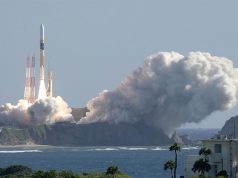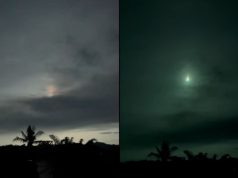
The long form of InSight’s name is Interior Exploration using Seismic Investigations, Geodesy and Heat Transport. The mission is expected to launch sometime in the five weeks following May 8, 2018 from Vandenberg Air Force Base, central California, with a Mars landing scheduled after Thanksgiving in 2018. It supposed to be the first interplanetary launch in history from America’s West Coast, according to the agency.
Information gathered by the NASA’s next spacecraft will boost understanding of how all rocky planets formed, including Earth.
“Because the interior of Mars has churned much less than Earth’s in the past three billion years, Mars likely preserves evidence about rocky planets’ infancy better than our home planet does,” Bruce Banerdt, InSight principal investigator of the Jet Propulsion Laboratory (JPL) of NASA, said in a statement.
InSight is the first mission of NASA to investigate the deep interior of Mars and is part of a legacy of robotic exploration that is helping to lay the groundwork for sending humans to Mars in the 2030s.
The mission will place a stationary lander near Mars’ equator. With two solar panels that unfold like paper fans, the lander spans about 6 meters, according to NASA.
Within weeks after the landing, always a dramatic challenge on Mars, InSight will use a robotic arm to place its two main instruments directly and permanently onto the Martian ground, an unprecedented set of activities on Mars.
The two main instruments are a seismometer and a heat probe. Shielded from wind and with sensitivity fine enough to detect ground movements half the diameter of a hydrogen atom, the seismometer will record seismic waves from “marsquakes” or meteor impacts that reveal information about the planet’s interior layers. And the heat probe is designed to hammer itself to a depth of 3 meters or more and measure the amount of energy coming from the planet’s deep interior.
Another experiment will use radio transmissions between Mars and Earth to assess perturbations in how Mars rotates on its axis, which are clues about the size of the planet’s core.
The mission was originally scheduled to launch in March 2016, but NASA suspended launch preparations in December due to a vacuum leak in the lander’s prime science instrument. A redesigned vacuum vessel for the instrument has been built and tested, then combined with the instrument’s other components and tested again.
The instrument redesign and two-year delay add 153.8 million U.S. dollars to its previous budget of 675 million dollars for the mission, according to the agency.
Lockheed Martin Space Systems is assembling and testing the InSight spacecraft in a clean room facility near Denver, Colorado. The Mars lander’s science payload also is on track for next year’s launch.
“The lander is completed and instruments have been integrated onto it so that we can complete the final spacecraft testing including acoustics, instrument deployments and thermal balance tests,” Stu Spath, spacecraft program manager at Lockheed Martin, said in a press release.









